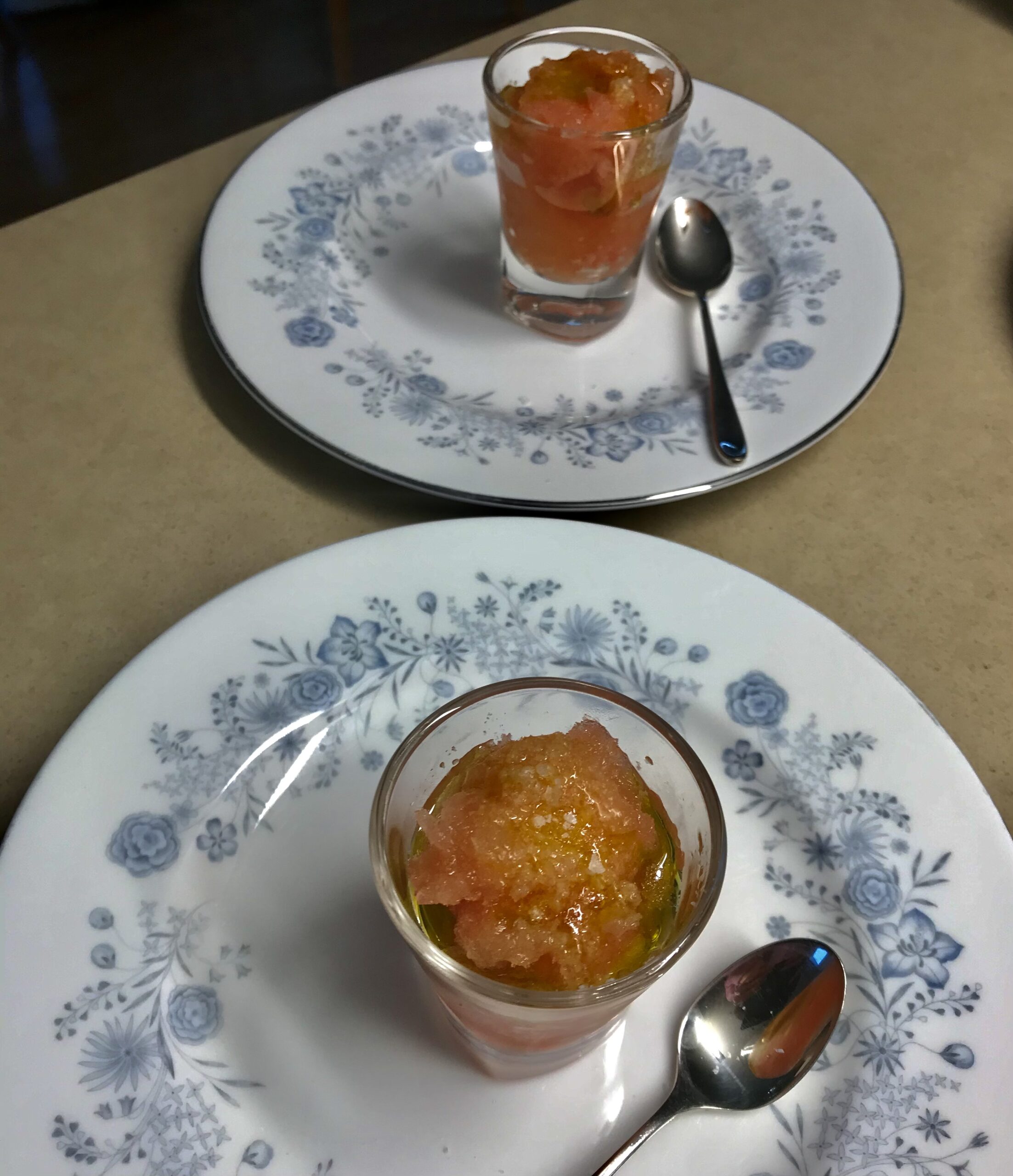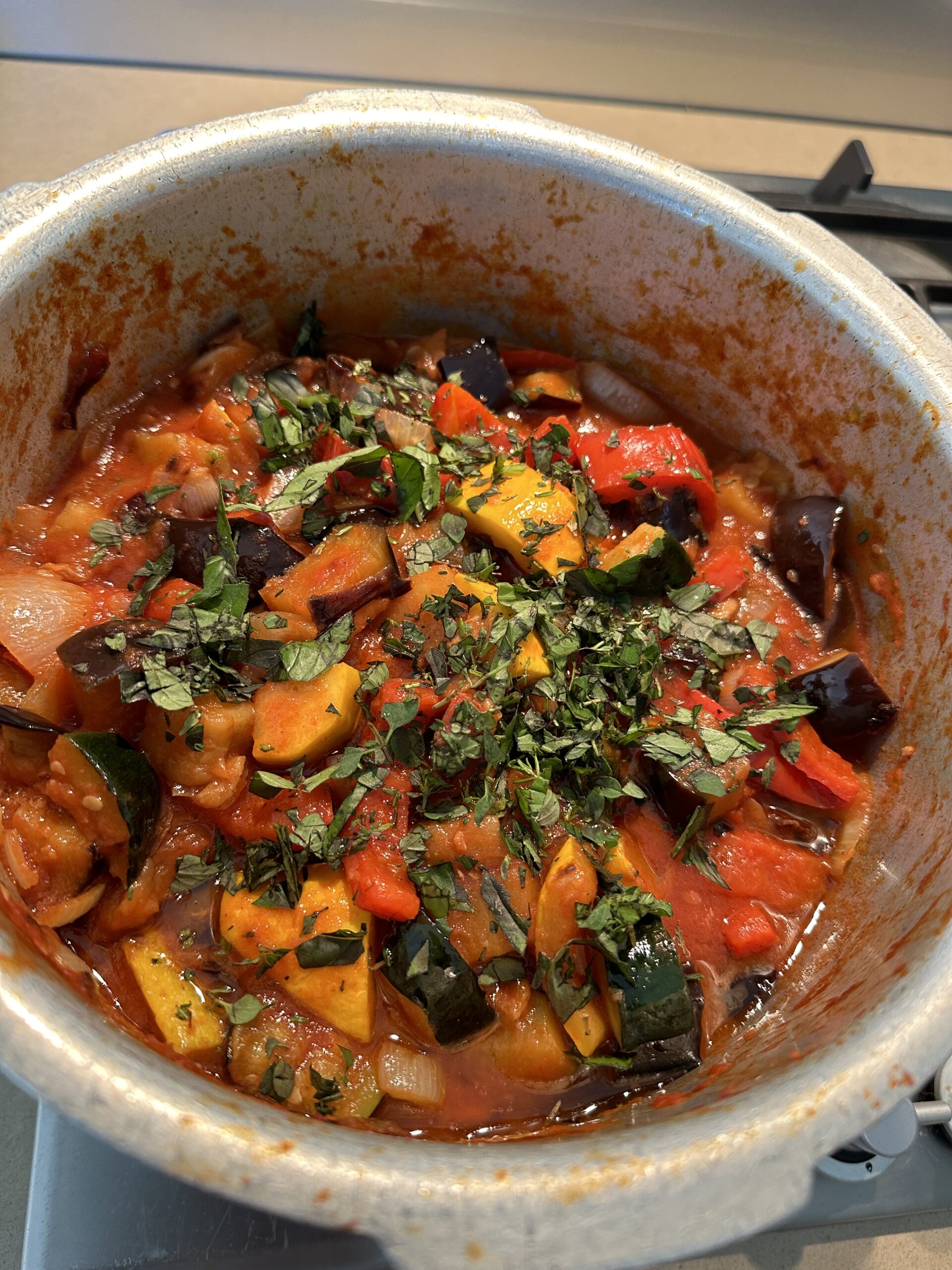Salmorejo is a Spanish soup, made from tomatoes, bread, olive oil and garlic. It’s served cold and is best described as a smooth Gazpacho. My son-in-law, who is a fabulous cook, served it when we were visiting earlier this year. I had never tried it before and thought it was delicious, so he sent me his recipe.
Having decided to use it as a base for a medley of seafood, I was concerned that when I heated it up in the microwave the Salmorejo might split, but it didn’t. It behaved perfectly.
Salmorejo relies on good quality tomatoes, so if it’s the middle of winter and the tomatoes in the supermarket are looking pale and unloved, use a couple of tins of good quality Italian tomatoes. As you can see from the photo, I didn’t do a very good job of making the goat cheese mousse into a beautiful shape with two spoons. The pressure was on to get the plates on the table for our guests before it got cold, so I ended up just putting rustic blobs. It still tasted good though.
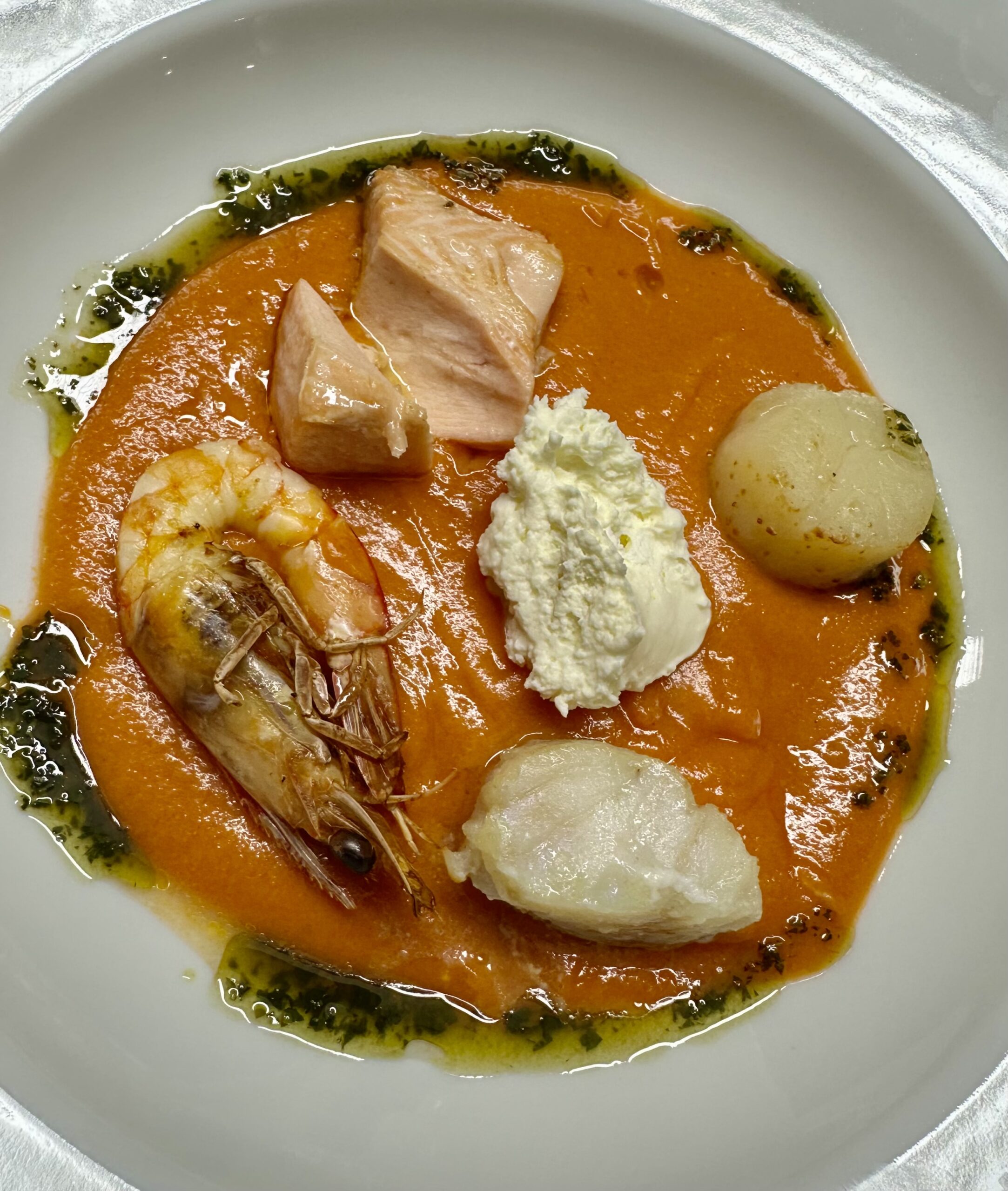
Salmorejo:
600g ripe tomatoes
1 baguette
1 clove garlic, crushed
1 Tbs sherry vinegar (or red/white wine vinegar)
1 cup extra virgin olive oil
Salt to taste
Fish:
1 small piece of skinless white fish per person (I used Ling)
1 small piece of skinless salmon per person
1 large scallop per person
1 large green (raw) prawn per person
50g butter, melted
1 clove garlic, crushed
Salt and pepper, to taste
Basil oil:
½ cup fresh basil leaves
Olive oil
Goat Cheese Mousse:
1 cup whipping cream
100g soft goat cheese
Skin tomatoes, remove cores and place the rest in a blender. Remove the “guts” from the baguette. You should have 2-3 cups. Keep the outer crusts for another use.
Add 2 cups of the bread, vinegar and garlic to the blender. Blend until smooth, adding the olive oil through the chute with the motor running. Add salt to taste. Add more bread if necessary, to achieve desired consistency. Refrigerate till serving time.
Remove shells from prawns, leaving the heads and tips of the tails intact. Melt the butter with the garlic and season to taste. Use it to brush all the seafood on both sides. Can be prepared ahead to this point and kept in the fridge.
Make basil oil by blending the basil with enough oil in a blender or food processor to make a thick sauce. For the goat cheese mousse, whip cream with electric beaters until thick then add the goat cheese and continue to whip until combined. Keep in the fridge.
At serving time, grill or pan fry the seafood. I cooked the prawns and scallops in the air fryer and the fish on a paper-lined tray in a hot oven. They took about 10 minutes max.
To serve, heat the Salmorejo in a microwave, ladle into 8 serving bowls and top with the seafood. Place a blob of goat cheese mousse in the centre and drizzle some basil oil around the edge. Serve with crusty bread and follow with a green salad – we had fresh rocket from the garden with toasted pine nuts.
Serves 8
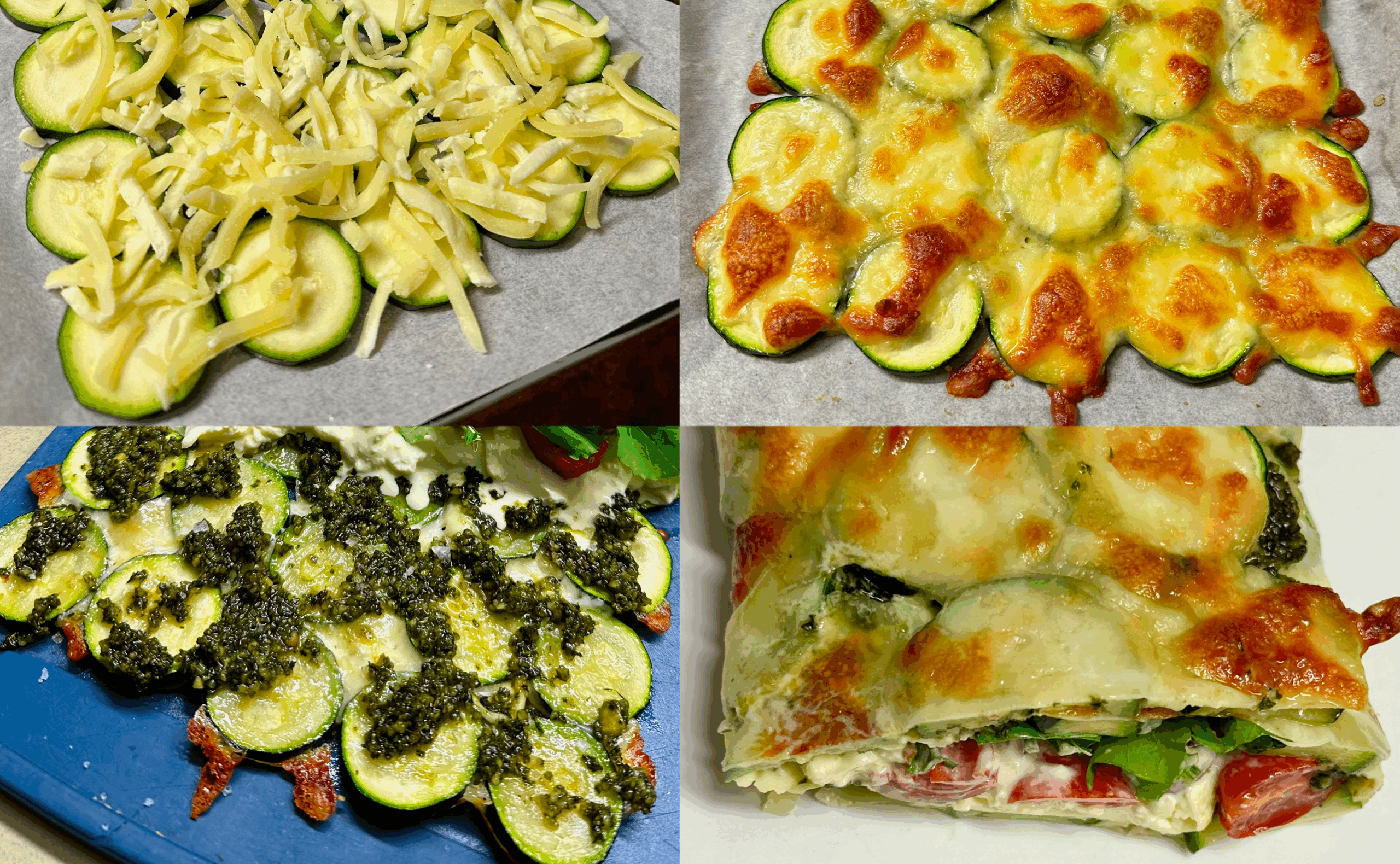

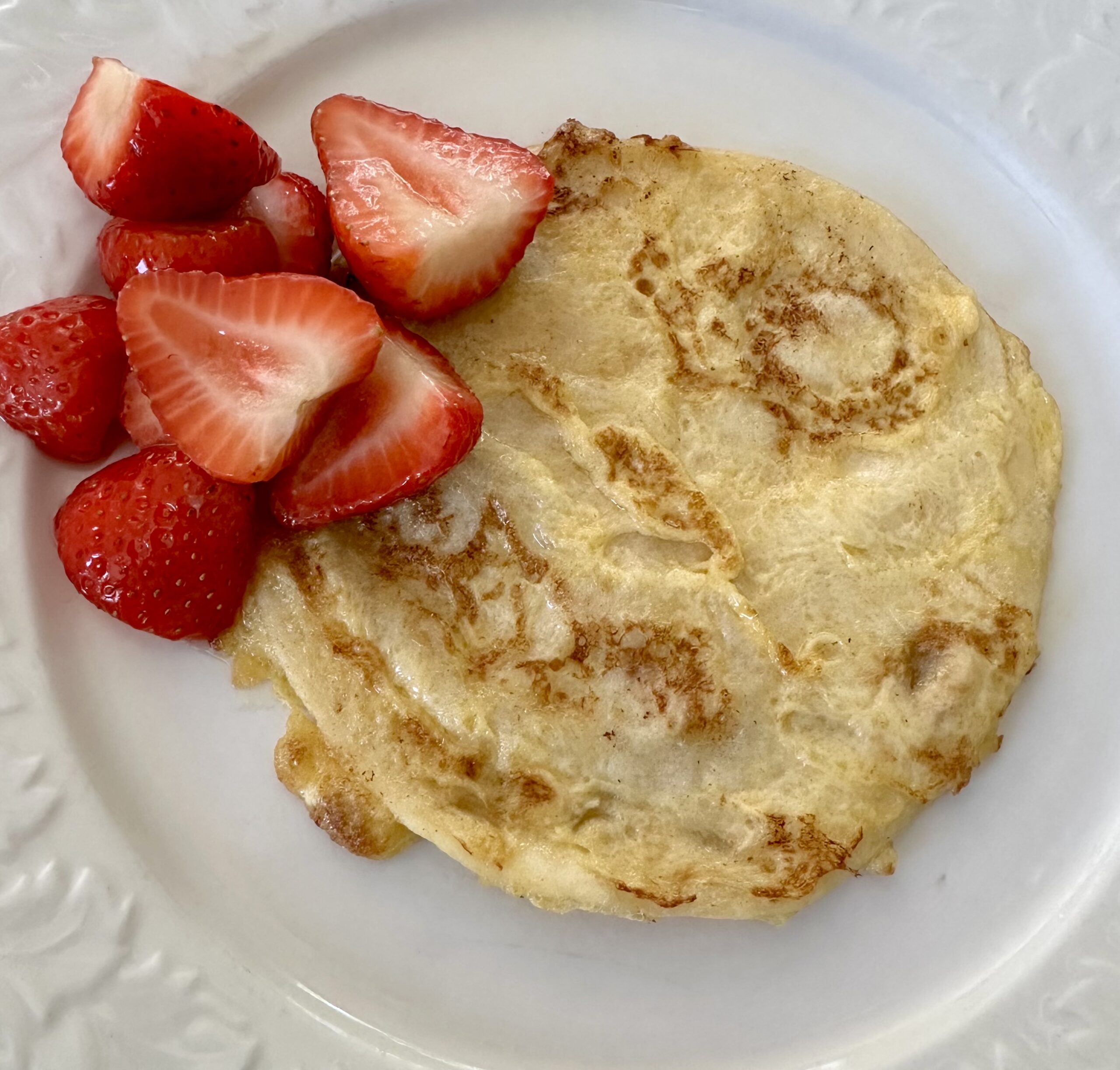
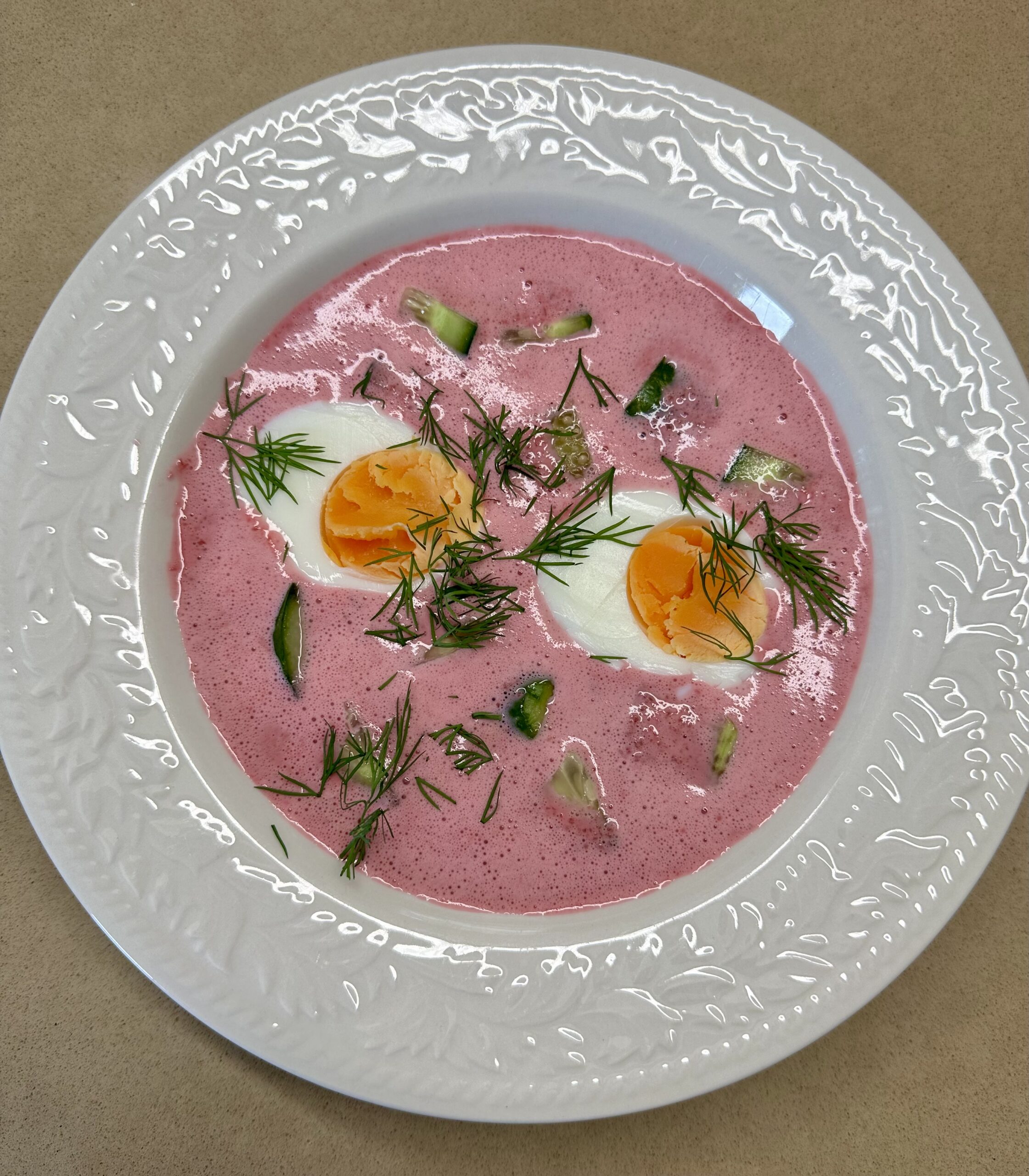 500g cooked, peeled beetroots
500g cooked, peeled beetroots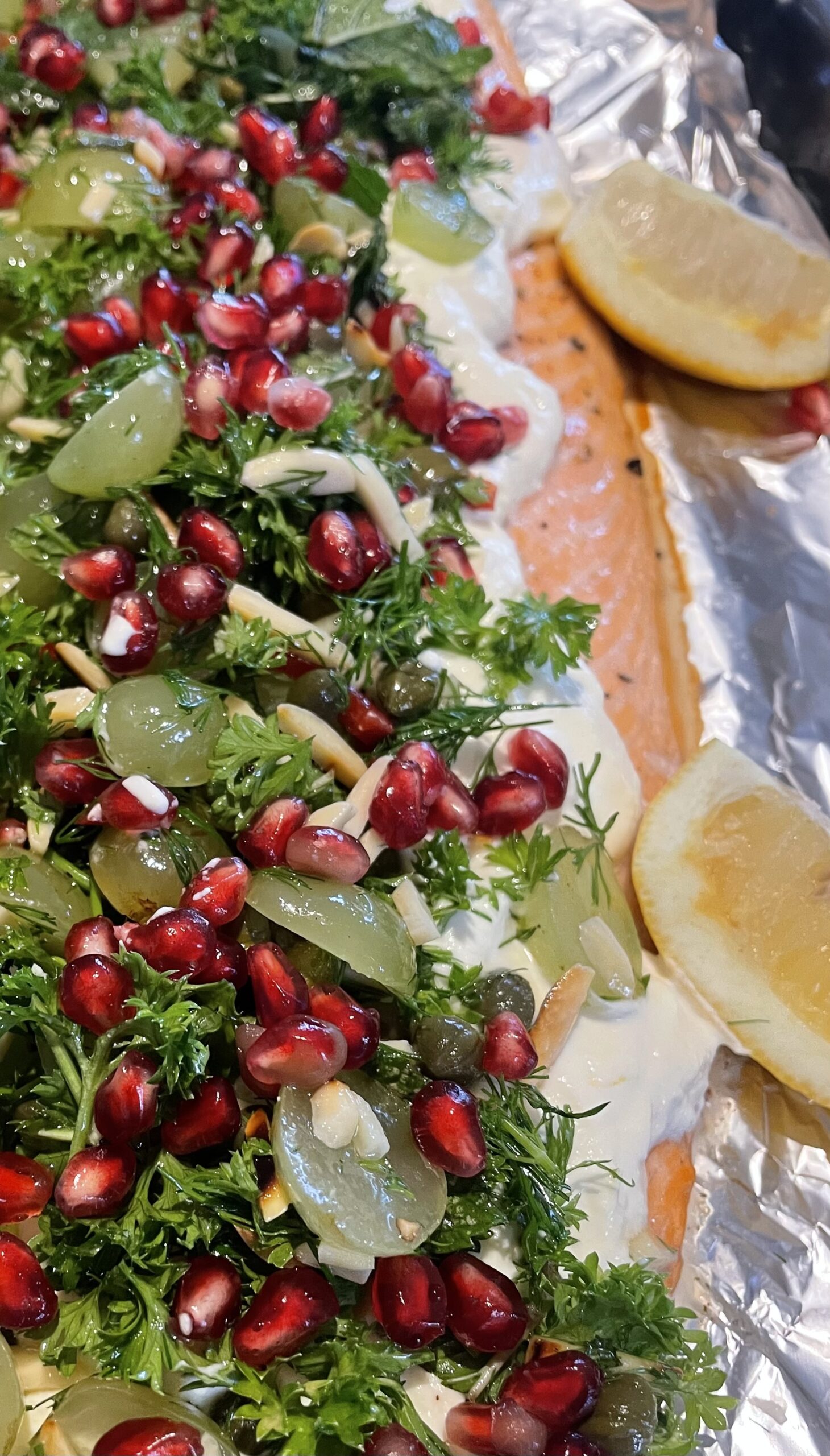
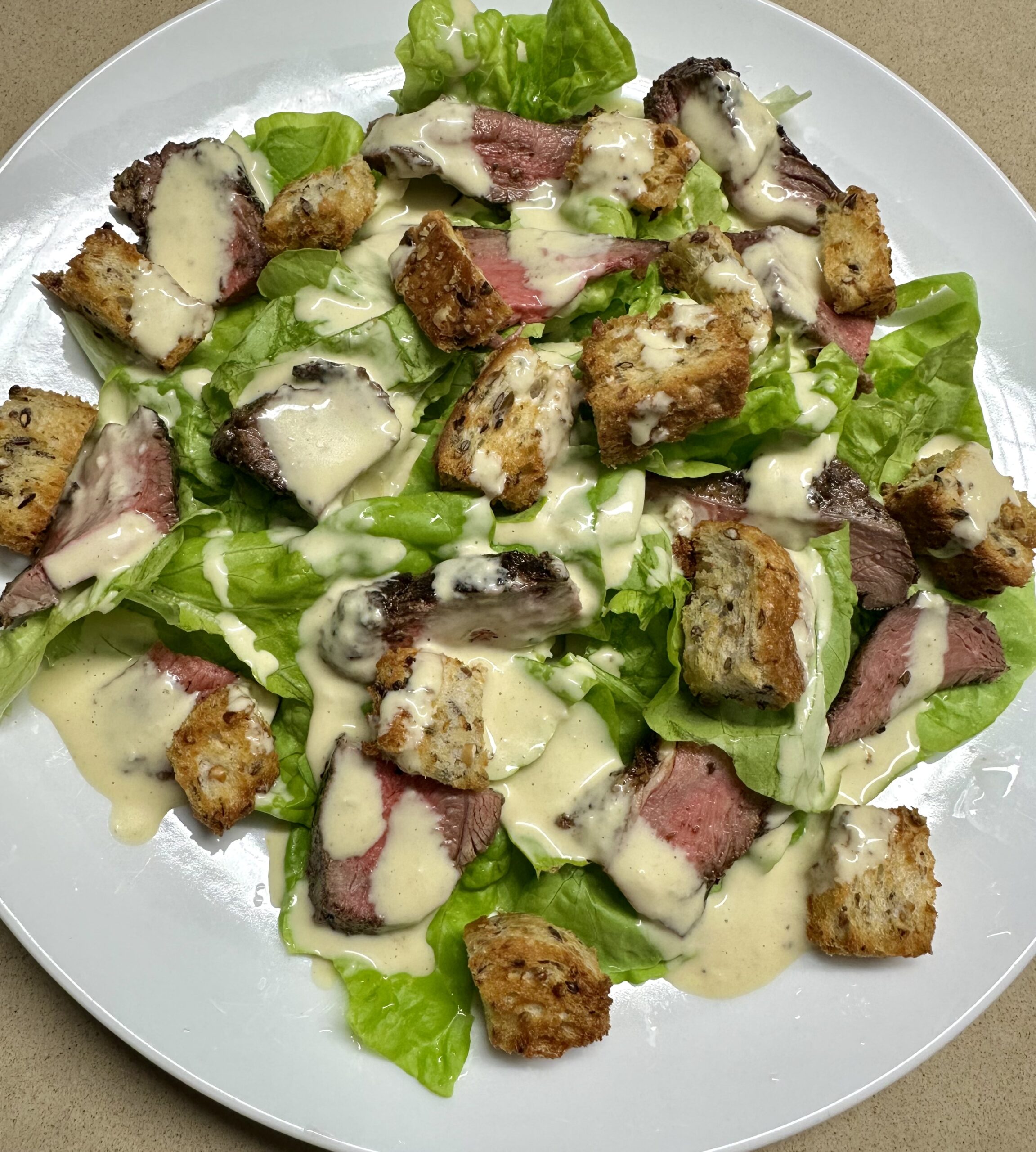
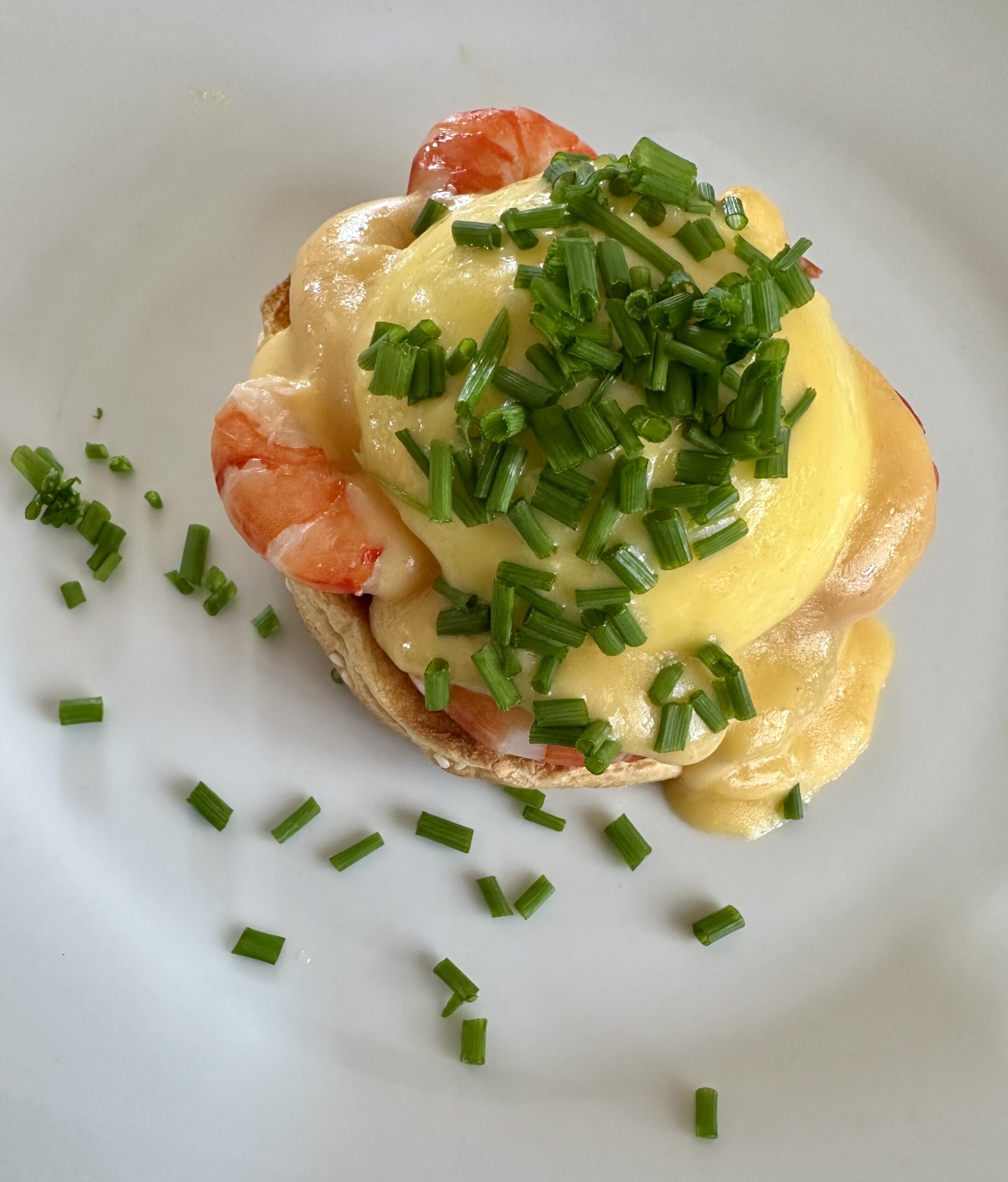
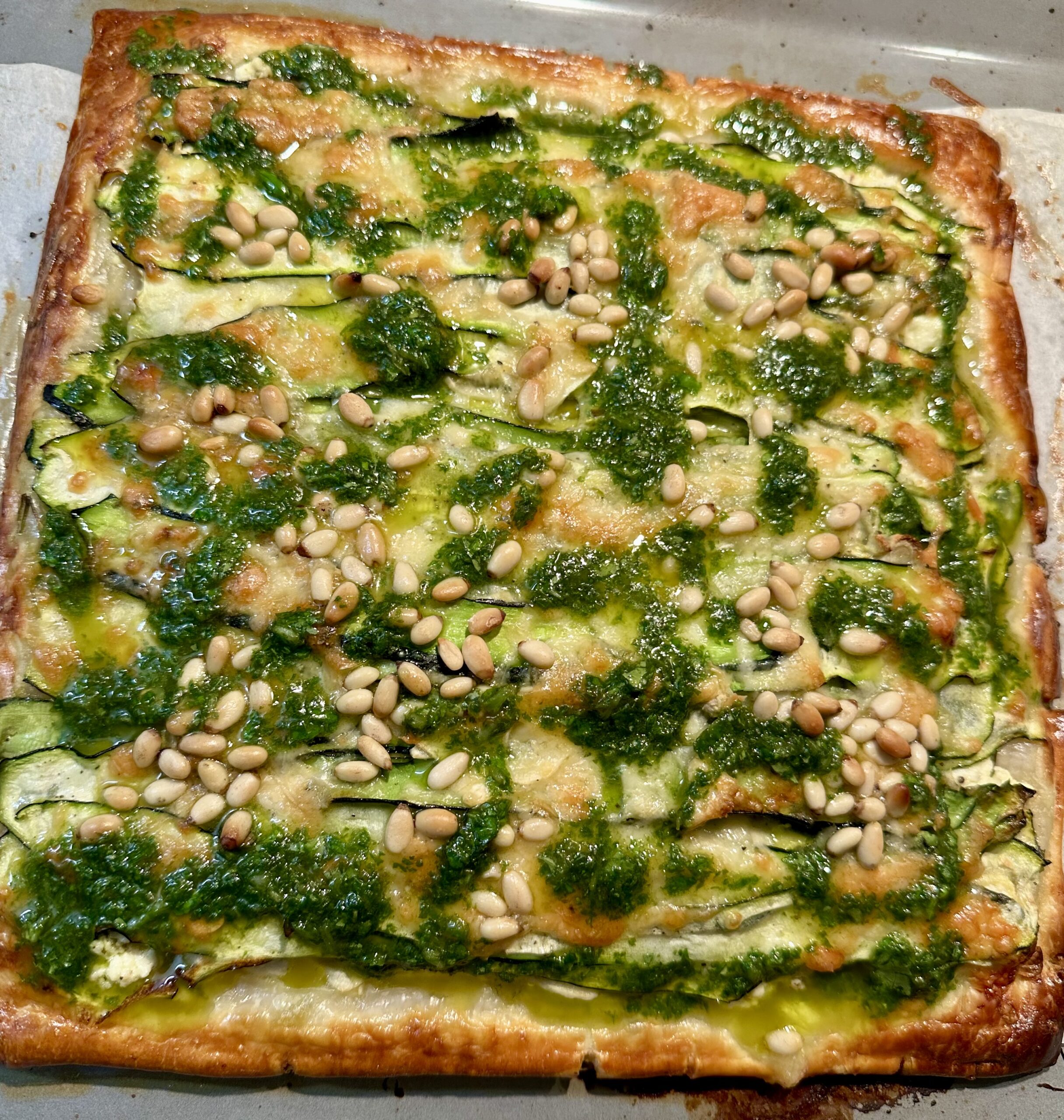 1 sheet of ready-rolled puff pastry
1 sheet of ready-rolled puff pastry